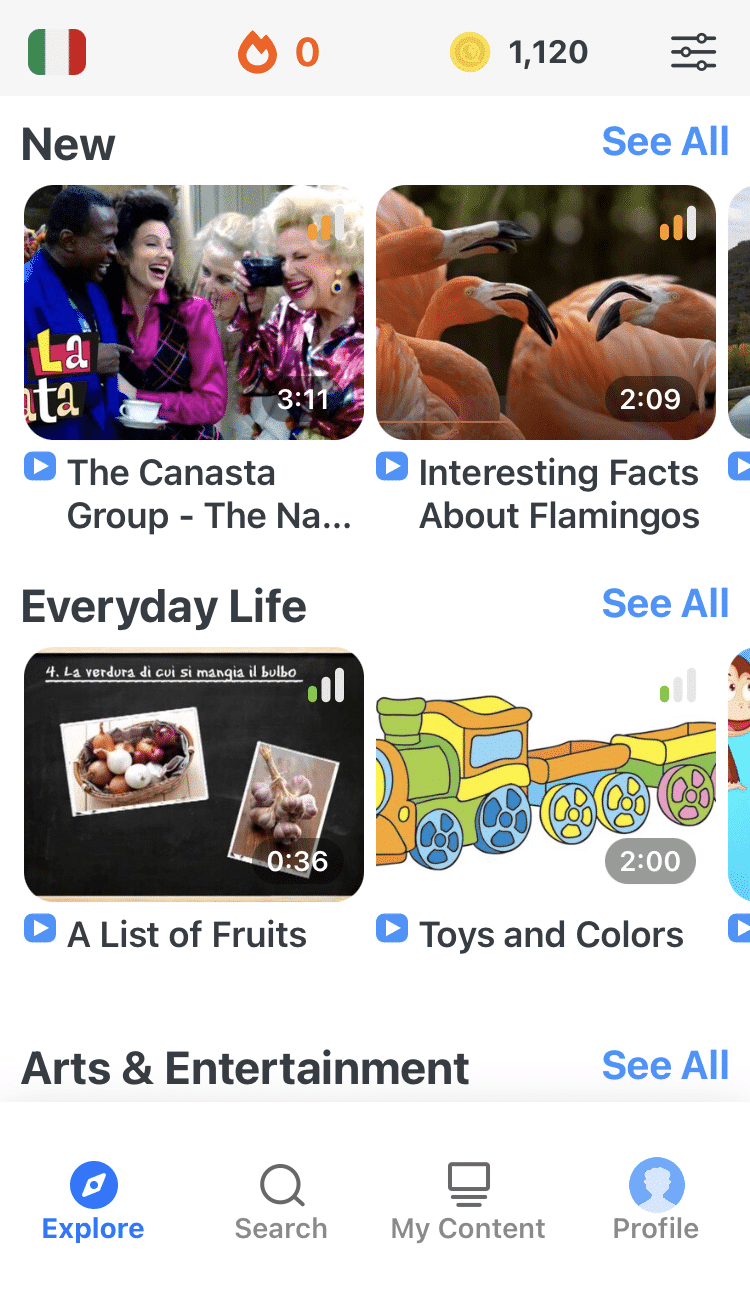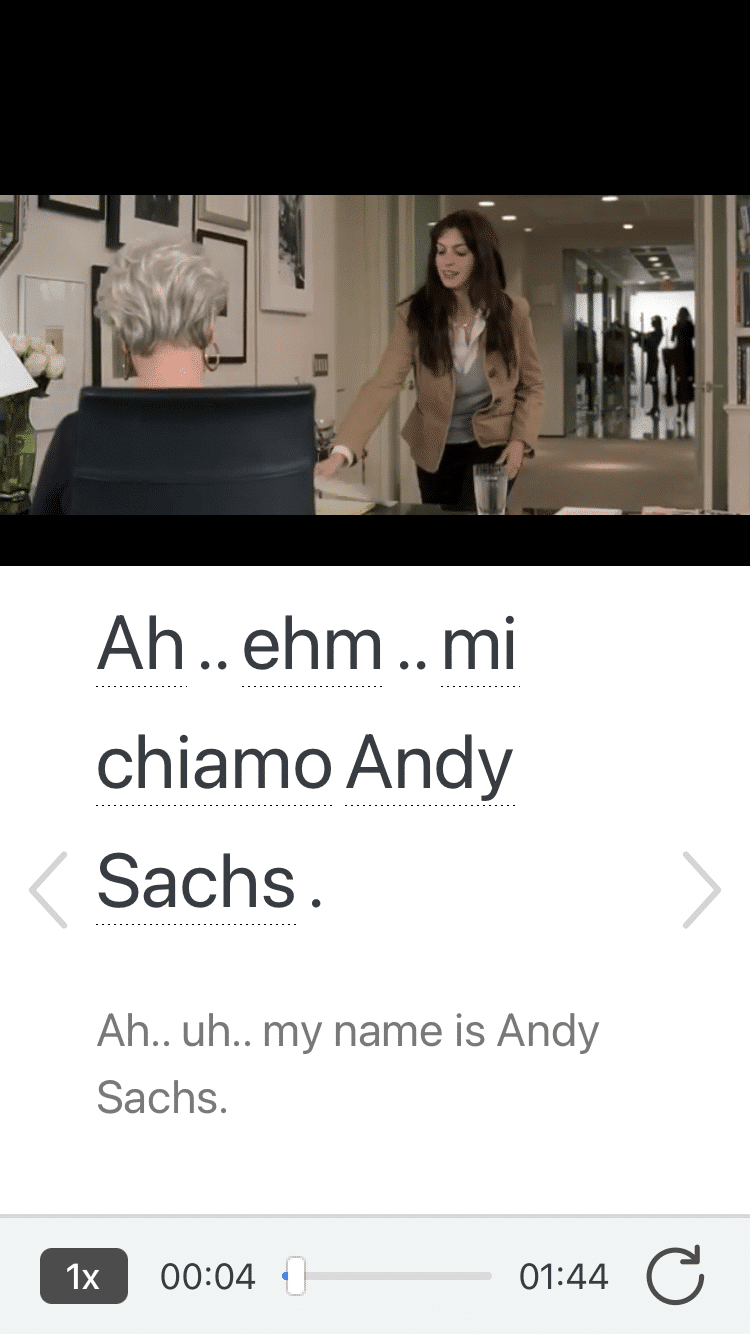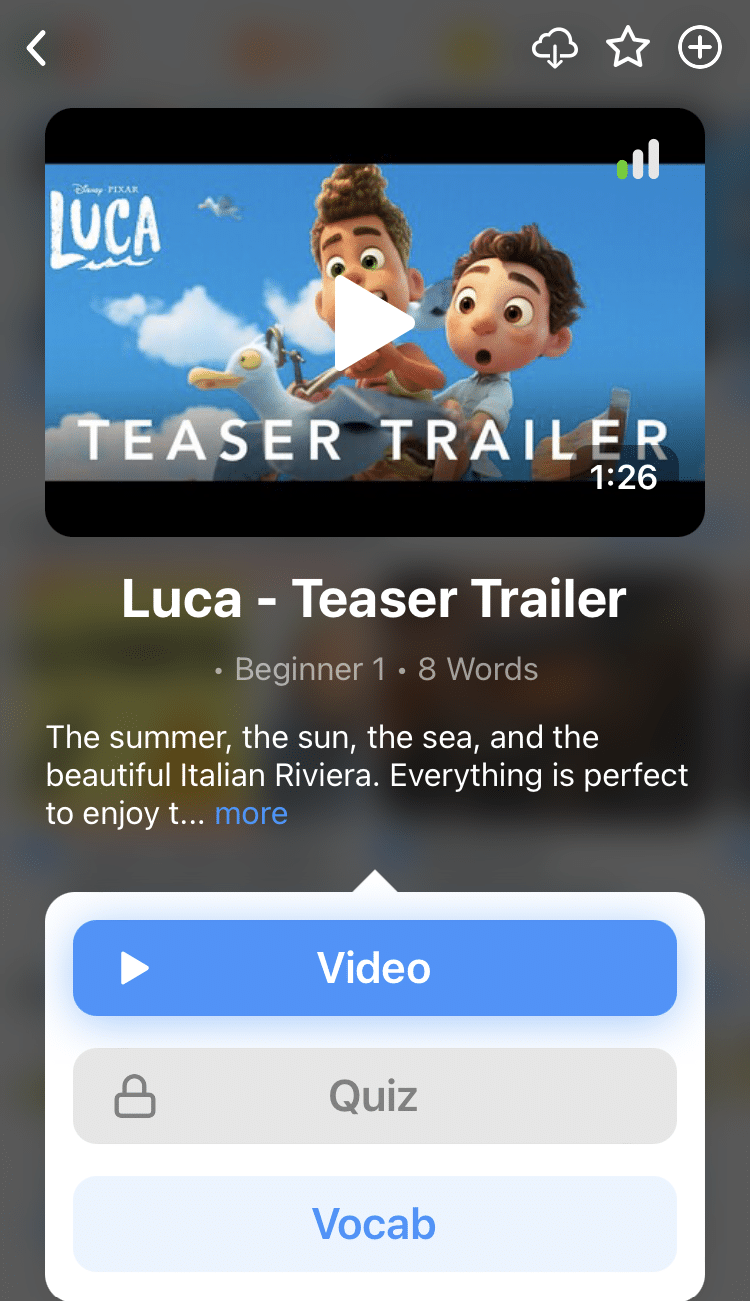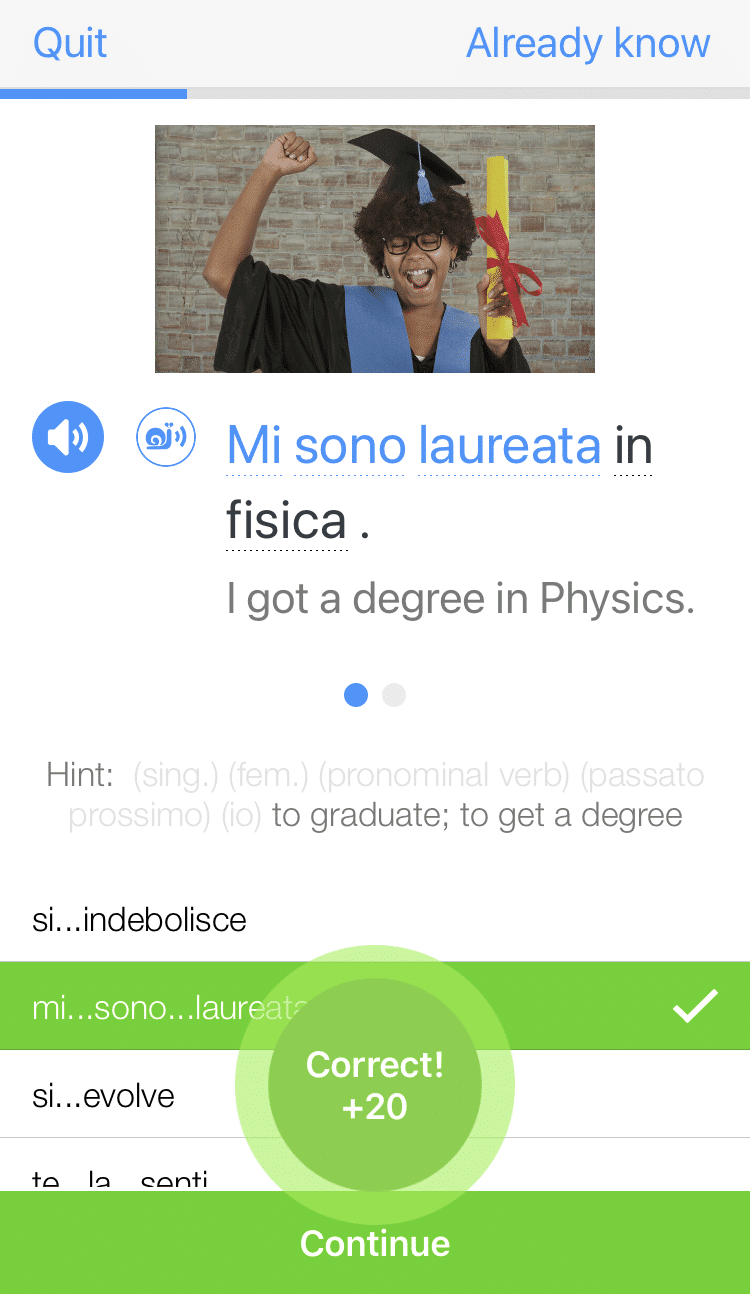
9 Italian Tongue Twisters
“Puoi parlare più lentamente per favore?” (Can you speak more slowly please?)
When you’re talking to an Italian speaker, the first thing you’ll notice is that they talk so fast.
Tongue twisters are a great way to speed up your progress to keep up with the locals.
In this post, you’ll find 9 Italian tongue twisters of varying difficulties that you can use to perfect your pronunciation and speed when speaking Italian.
Contents
- Italian Tongue Twisters For All Levels
- How Can Tongue Twisters Help You Learn?
- Tips for Learning Italian Tongue Twisters
- And One More Thing...
Download: This blog post is available as a convenient and portable PDF that you can take anywhere. Click here to get a copy. (Download)
Italian Tongue Twisters For All Levels
Below, we’ve chosen some of the best tongue twisters for Italian practice, due to the variety and usefulness of the sounds they use and we’ve ordered them by their level of difficulty.
Let’s get started!
1. Un limone, mezzo limone, due limoni, tre limoni.
English version: A lemon, half a lemon, two lemons, three lemons.
Difficulty: Easy
This short tongue twister is simple and fun to say! It helps you practice singular and plural pronunciations, switching from limone (singular) to limoni (plural) halfway through. The “eh” sound of the singular “e” changes to “ee” with the plural vowel “i.”
It also helps you practice quantity vocabulary. It’s important to know how to use the singular form or say “half,” “two” and “three,” particularly if you’re ordering food or in a store.
2. In un piatto poco cupo, poco pepe cape.
English version: In a dish not deep enough, not much pepper fits.
Difficulty: Easy
This fun tongue twister helps you practice pronouncing your “p” properly. There’s a small difference between the English and Italian pronunciation of the letter “p.” In English, you often aspirate (breathe out air as you speak), but in Italian, there’s no aspiration.
Mastering this sentence helps you learn to pair the shortened “p” sound with several of the vowels we’re going to be working on.
3. O postino che porti la posta, dimmi postino che posta portasti.
English version: Oh postman who brings the mail, tell me postman what mail you brought.
Difficulty: Easy
The main vowel you get to work on with this tongue twister is an “o.” The challenge is that it’s pronounced two ways.
“O,” “por” and “no” use a closed “o” sound. This means that your mouth is narrowed when you pronounce it, like “oh” in English.
On the other hand, the “po” in postino (postman) and posta (mail) use an open “o.” With this pronunciation your mouth is open, and the sound is similar to the word “spot.” You can warm up for this tongue twister by saying “o” repeatedly while changing the position of your lips.
4. Sotto le frasche del capanno, quattro gatti grossi stanno; sotto quattro grossi sassi, quattro gatti grossi e grassi.
English version: Under the boughs of the shack, four big cats stand; under four big stones, four big fat cats.
Difficulty: Intermediate
This tongue twister is the perfect practice for double consonants. Almost every word has double consonants in it, which helps you work on your emphasis.
The double “n” and double “s” are held slightly longer than you’d pronounce a single letter. Think of it as an extra beat in the word. For the double “t,” the stop is more pronounced than usual, with the finish being slightly more emphatic than normal. It sounds complicated, but it’s very easy to get the hang of!
5. Buonasera signorina, che bea sera che l’è stasera, se doman de sera l’è na bea sera come stasera che bea sera che l’è doman de sera.
English version: Good evening miss, what a beautiful evening this evening is, if tomorrow evening is a beautiful evening like this one, what a beautiful evening tomorrow evening will be.
Difficulty: Intermediate
This tongue twister is a mouthful, but very fun to say once you get the hang of it! It’s also another unique one because it’s in the Venetian Italian dialect.
The focus of this sentence is the long “e” vowel and the “a” sound, which is pronounced like “ah.”
There’s a rhythm to this sentence, so the best way to learn it is to take it a couple of words at a time and find that rhythm. You could even tap your toes to keep yourself in time.
6. Sul tagliere l’aglio taglia. Non tagliare la tovaglia. La tovaglia non è aglio. Se la tagli fai uno sbaglio.
English version: On the cutting board, the garlic is cut. Don’t cut the tablecloth. The tablecloth is not the garlic. If you cut it, you make a mistake.
Difficulty: Hard
If you’re looking to build your kitchen vocabulary, this is the perfect tongue twister for you!
In this tongue twister, we see “gli,” one of the most complicated sounds for Italian learners, and how it fits with other vowels. “Glie,” “glio” and “glia” all make an appearance here.
You can warm up for this sentence by saying “lyee-o,” “lyee-ah” repeatedly. Treat it like you would the tongue twister itself: start slowly and try to gain speed. Not only will it loosen you up, but it’ll also make saying the full sentence much easier.
For more “gli” practice, don’t forget to check out #9!
7. Quanti rami di rovere roderebbe un roditore se un roditore potesse rodere rami di rovere?
English version: How much wood would a woodchuck chuck if a woodchuck could chuck wood?
Difficulty: Hard
This one may seem familiar to you, as it’s a very popular tongue twister in English. The Italian version is helpful in establishing your “i” and “e” sounds. For example, quanti (how much) rami (wood; literally a tree branch) and di (of) all end with an “ea” sound, like the English word “sea.”
This sentence also has both long “e” vowels and short “e” vowels. The long “e,” like the “re,” “be” and “se” in rovere (wood; literally a type of tree), roderebbe (would gnaw) and potesse (could) are similar to the “ai” sound in the word “pair.” The short “e,” however, such as the “de” in roderebbe, sounds more like “eh,” similar to the vowel sound in “ten.”
8. Trentatré trentini entrarono a Trento tutti e trentatré trotterellando.
English version: Thirty-three people from Trentino came into Trent, all thirty-three trotting and toddling.
Difficulty: Hard
This Italian tongue twister is one of the most popular ones you’ll find. It’s a great phrase to work on your “t” words. Particularly, it emphasizes the “tr” sound that comes up eight times.
This also makes it great for learning to roll your “r,” a challenge for most Italian learners. Before you start working on this one, spend a short amount of time practicing your trill.
9. Guglielmo coglie ghiaia dagli scogli scagliandola oltre gli scogli tra mille gorgogli.
English version: Guglielmo grabs gravel from the rocks, hurling it over the rocks in a thousand gurgles.
Difficulty: Hard
This tongue twister is perfect for those who want to practice the pronunciation of “gli” in Italian as it shows up eight times in this sentence, in almost every word!
“Gli” in Italian uses a “lyee” type sound. Think of how you say the second half of the word “million.”
Those three little letters can be quite a tangle, but if you warm up by saying “million” slowly, or exaggerate saying “lyee,” you’ll conquer this tongue twister in no time.
How Can Tongue Twisters Help You Learn?
Learning the basics of Italian is the first step to reaching fluency, and pronunciation is a very important building block. But it’s not easy to master, since there are plenty of Italian pronunciations that are easy to mix up. Getting a handle on pronouncing sounds like “glio” and “glia” can be difficult for anyone. This is where tongue twisters can help.
Since the point of a tongue twister is to group similar sounds, they’re a perfect way to master difficult pronunciations. Through repetition, you’ll gain confidence with both individual sounds and constructing sentences. And with confidence, you’ll gain the speed you need to sound like a real Italian.
There are lots of Italian tongue twisters for you to practice your skills with such as the ones listed in this post. For a real deep dive, you can find extensive Italian tongue twister lists at tongue-twister.net and Easitalian.
Tips for Learning Italian Tongue Twisters
Begin by breaking the tongue twister into manageable segments. Start working on each segment slowly and deliberately so you can really get a handle on pronouncing the words.
Once you start to feel comfortable with the segments, work on the full tongue twister. As it gets easier for you to say, speed it up bit by bit. Record yourself speaking with your phone or a free online recorder, and work on cutting down your recording time. Eventually, you’ll be able to keep up with even the fastest Italian speaker!
While learning tongue twisters, it’s important to know the vocabulary that goes into them. As my Italian piano teacher used to say, “if you can’t play it slow, you won’t be able to play it fast!” The same principle applies to learning to speak Italian. You need to know the words you’re saying before you try to rattle them off quickly.
If you want to become fully fluent in Italian, you need to master not only the language itself but the speed of speech as well. One fun and easy way to work on speaking quickly is by practicing tongue twisters.
Soon, you’ll have people asking you to slow down!
Download: This blog post is available as a convenient and portable PDF that you can take anywhere. Click here to get a copy. (Download)
And One More Thing...
If you're as busy as most of us, you don't always have time for lengthy language lessons. The solution? FluentU!
Learn Italian with funny commericals, documentary excerpts and web series, as you can see here:

FluentU helps you get comfortable with everyday Italian by combining all the benefits of complete immersion and native-level conversations with interactive subtitles. Tap on any word to instantly see an image, in-context definition, example sentences and other videos in which the word is used.

Access a complete interactive transcript of every video under the Dialogue tab, and review words and phrases with convenient audio clips under Vocab.

Once you've watched a video, you can use FluentU's quizzes to actively practice all the vocabulary in that video. Swipe left or right to see more examples of the word you’re on.

FluentU will even keep track of all the Italian words you’re learning, and give you extra practice with difficult words. Plus, it'll tell you exactly when it's time for review. Now that's a 100% personalized experience!
The best part? You can try FluentU for free with a trial.
Start using the FluentU website on your computer or tablet or, better yet, download the FluentU app from the iTunes or Google Play store. Click here to take advantage of our current sale! (Expires at the end of this month.)


